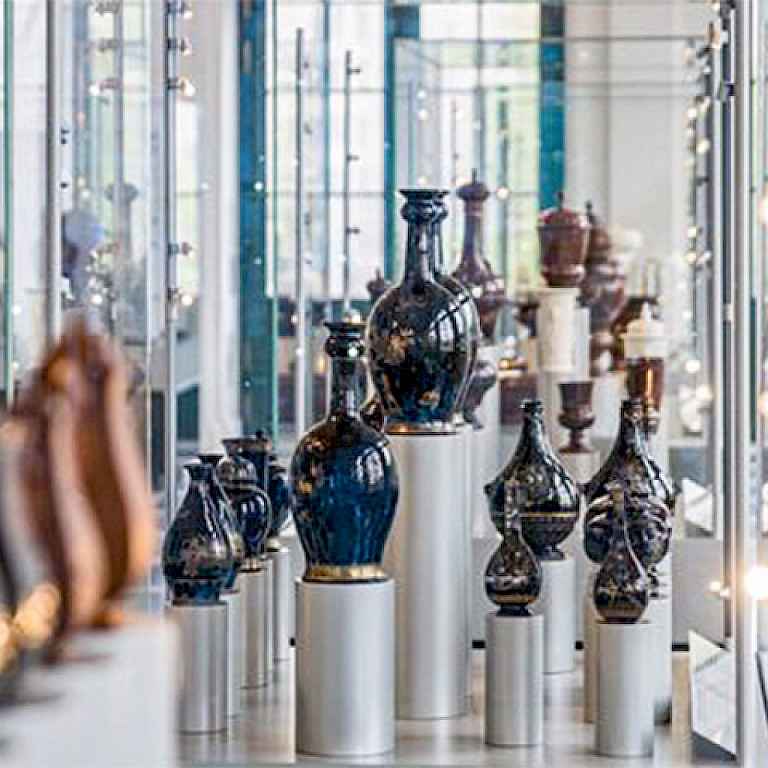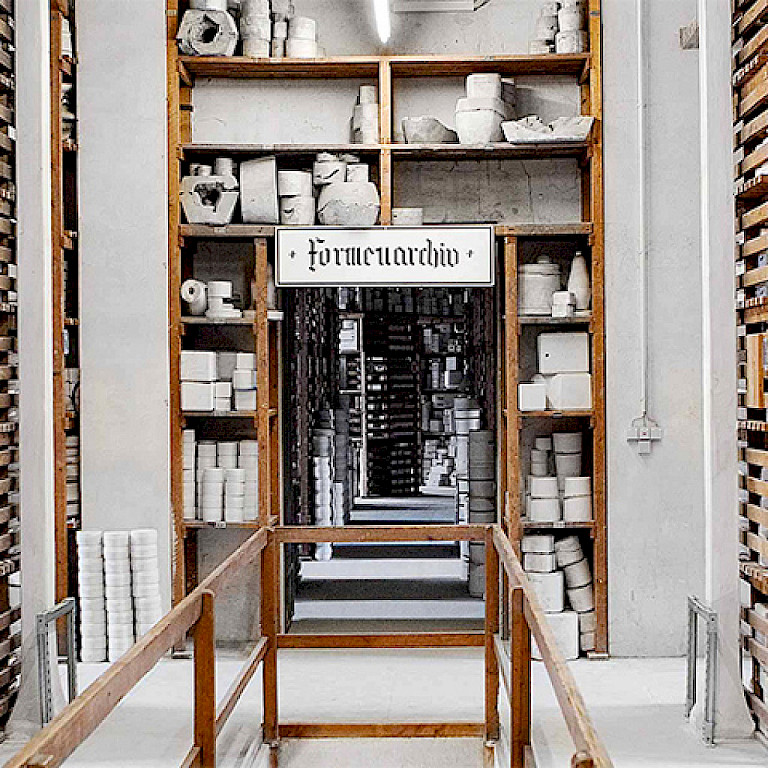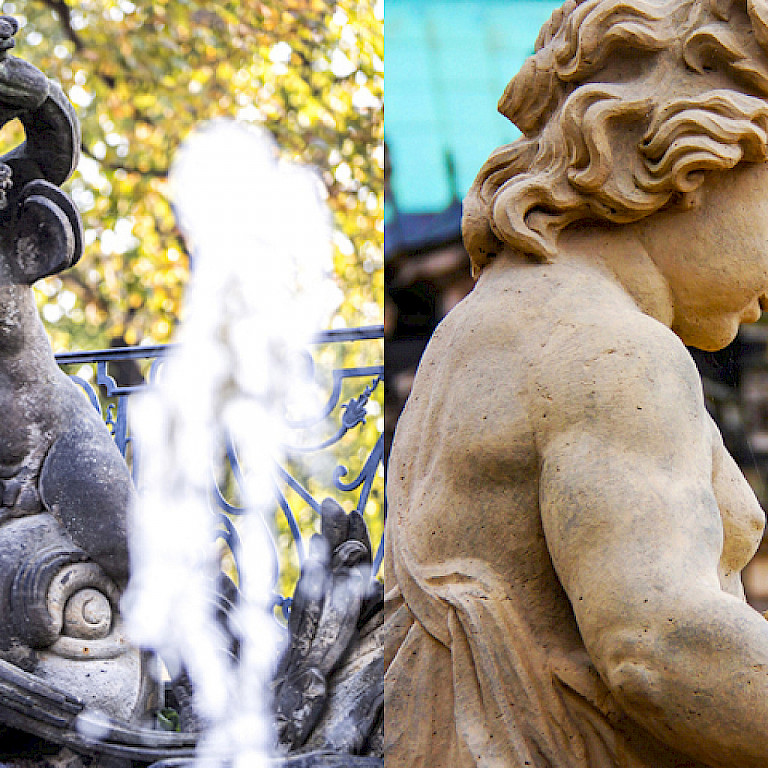
Die Porzellansammlung im Zwinger
Oliver Killig/Staatliche Kunstsammlungen Dresden

Der Erfinder des Porzellans in Sachsen, Johann Friedrich Böttger
gemeinfrei

Die Porzellanmanufaktur MEISSEN
www.meissen.com

Die Ausgestaltung des Zwingers konzipierten Balthasar Permoser und Daniel Pöppelmann
sharonang/Pixabay

Der Thron des Großmoguls Aureng-Zeb oder Der Hofstaat zu Delhi am Geburtstag des Großmoguls Aureng-Zeb (Johann Melchior Dinglinger, 1701–1708)
Staatliche Kunstsammlungen Dresden
09 THE CREATIVE AND THE INNOVATORS
In the 17th and 18th century, society was divided into several estates. That there was a fixed distribution of power, rights and duties between the individual social groups was an expression of the order willed by God. Traditionally clerics were at the top of such a hierarchy followed by the aristocracy. The so-called third estate, consisting of citizens, farmers, soldiers, tradesmen, and craftsmen accounted for the largest part of the population. They paid taxes and money to the church, had to do forced labour and military service, and only owned a small amount of property.
In Dresden, a royal seat, the third estate was entirely devoted to the court: Its members were civil servants and domestic servants or craftsmen who supplied their products to the nobility. The great demand of the Court for luxury goods also promoted the qualitative level of the products. This laid the foundations for the creativity and innovative spirit of crafts, trade and industry in Saxony.
Dresden is considered the cradle of porcelain production in Europe. The pharmacy apprentice Johann Friedrich Böttger discovered the recipe by chance - he was trying to make gold. Until then, the "white gold", which was much in demand at the European aristocratic courts, could only be imported from China or Japan. Once the manufacturing process was perfected, Augustus the Strong founded the Royal Polish and Electoral Saxon porcelain factory in Meissen in 1710. Today Meissen porcelain is a world brand.
The Dresden Court was the cultural centre of the royal seat. Recognised artists could be appointed there and could stay there for many years – as the case was with Balthasar Permoser, who as court sculptor, formed a creative duo with the architect Matthäus Daniel Pöppelmann. For the Zwinger that was designed by Pöppelmann, Permoser created many sculptures which possessed a new expressiveness. From 1698 Augustus the Strong’s Court Jeweller was Johann Melchior Dinglinger. His incomparable work such as the “golden coffee service” belongs to one of the show pieces that can still be seen today in Dresden’s Green Vault.
Another outstanding personality was Johann Georg Palitzsch, who ran a small farm in Prohlis, today a district of Dresden. Palitzsch possessed extensive botanical, physical and astronomical knowledge and in 1758 he became known in scholarly circles throughout Europe with the first discovery of the expected Halley's comet.
Next to Palitzsch, Böttger, Permoser and Dinglinger, many other people have left lasting traces in the artistic life of the city and in the Saxon economy. You can discover some of them in the panorama.